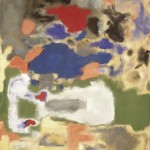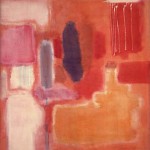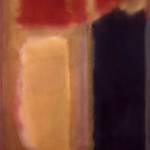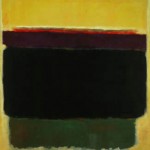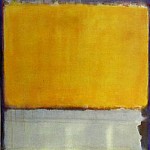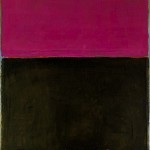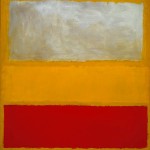Mark Rothko

Mark Rothko was born Marcus Rothkowitz in Russia in 1903. His father, Jacob Rothkowitz, was a pharmacist and an intellectual, who provided his children with a secular and political, rather than religious, upbringing. Unlike Jews in most cities of Czarist Russia, those in Dvinsk had been spared from violent outbreaks of anti-Semitic pogroms that were common at that time. However, in an environment where Jews were often blamed for many of the evils that befell Russia, Rothko’s early childhood was plagued with fear.
In 1913, Rothko, with his mother and sister, immigrated to Portland, Oregon, where he was reunited with his father and his two brothers, who had already immigrated to America. He was awarded a scholarship to Yale University which ran out after one year and studied the Art Students League in New York in 1925 under the artist Max Weber. This was to be Rothko’s only formal artistic training.
Click here to continue reading this biography
Mark Rothko created some of the more spiritually radiant paintings of any artist in any year. That his paintings were abstractions – blocks of color conjoined by a marriage of midline intercourse of pigment – makes this accomplishment something that still befuddles art critics, historians and viewers alike. He is classified as an abstract expressionist, although he himself rejected this label, and even resisted classification as an “abstract painter”.
Regardless of his label, Mark Rothko however was the most religious of the Abstract Expressionists. His paintings were created at the height of American consumerism and are created to evoke thoughts of spirituality and contemplation. The areas of intense color float and shimmer in an inviting way with a certain glow. In his last series of canvases for the Rothko Chapel in Houston, completed shortly before his suicide, he wanted to create an awe inspiring atmosphere as powerful as the greatest religious art.
Although Mark Rothko rejected the label, as he eventually rejected all such descriptions and descriptive labels about him or his work, Rothko was considered one of the finest artists of abstract expressionism of the twentieth century. Much of his works, imbued with liberal use of vibrant colors and a sense of myth, were initially representational in form, then became more abstract and darker, even brooding in sentiment, as he aged and matured as an artist.
He took his own life on February 25, 1970 at the age of 66.
- Photograph of Mark Rothko
- Slow Swirl at the Edge of the Sea – 1944
- Untitled (Multiform) – 1948
- Untitled – 1948
- No. 9 – 1948
- Mark Rothko, No. 17 (or) No. 15 – 1949
- Untitled – 1949
- No. 8 – 1949
- White Center – 1950
- No. 10 – 1950
- No. 2 – 1951
- Untitled (Blue, Green, and Brown) – 1952
- Untitled – 1953
- No. 13 (White, Red, on Yellow) – 1958
- Untitled (Seagram Mural sketch) – 1959
- No.4 – 1964

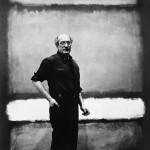

![Mark Rothko, Untitled [Multiform]](https://abstractartist.org/wp-content/uploads/2011/05/mark-rothko-untitled_5-150x150.jpg)
